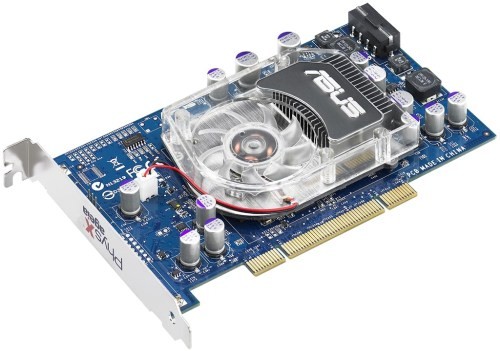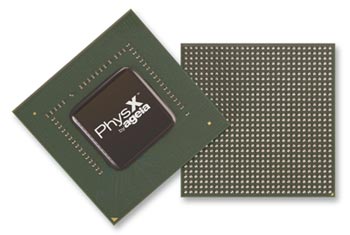ASUS’s AGEIA PhysX P1 Card
Taking The ASUS PhysX P1 Card For a Test Drive

On May 9, 2006 ASUSTeK Computer Inc. introduced the PhysX P1 card, which adopted Ageia’s all-new PhysX Processing Unit (PPU). Currently, only two companies have the capability to develop PPU cards. That means that other than ASUS only BFG Technologies has a PhysX card on the market. We’ve had the card for some time now, but could not get the article out last week, as the majority of our staff was attending the Electronics Entertainment Expo. This delay actually played out in our favor as I had a chance to again talk to Ageia in person and play upcoming PhysX game titles. Today I bring you an editorial on the ASUS PhysX P1 card that details my expierence with one of the first Ageia PhysX PPU’s on the market.
In a gaming PC, the CPU (Central Processing Unit) drives game AI and logic, while the GPU (Graphics Processing Unit) delivers the three-dimensional scenes. This is how gaming has been done since the S3 ViRGE, ATI Rage, and the Matrox Mystique graphics cards that brought hardware 3D acceleration to gamers around the world back in the mid 1990’s. Since then we have seen GPU’s seemingly evolve exponentially as the years have flown by. Today, GPU’s can do programmable shading and just recently have enjoyed pixel and vertex shaders that can implement looping and floating point math. The PPU takes gaming to the next level with never-seen-before dynamic motion and interaction.

So you might be asking yourself what exaclty does “never-seen-before dynamic motion and interaction” mean? Ageia says that they have been able to bring the laws of physics into gaming thanks to retail cards like the ASUS PhysX P1. With a PPU games can now offer enhanced realism for explosions, flying debris, liquid flows, water splashes and movements influenced by wind. No two motions will be the same, which means no more canned animations and predetermined interaction as a physics processor is on board rendering the paths in real time. Basically consumers are going to pay more and will get more “particles” out of games that have Earth like physics in them.
Today the ASUS PhysX P1 Ghost Recon Edition will set you back ~$273, but comes bundled with the full PC version of Ubisoft’s Ghost Recon Advanced Warfighter (GRAW). When you take into consideration that GRAW costs $47 plus shipping (Newegg Link) to purchase individualy the cost is more reasonable, if you want the game that is. ASUS will also be releasing the ASUS PhysX P1, which is identical to the other model minus the PC game GRAW. No pricing on the stand alone version was available during print time.
Without further ado let’s take a closer look at the ASUS PhysX P1 card and what it means in todays market.

Comments are closed.